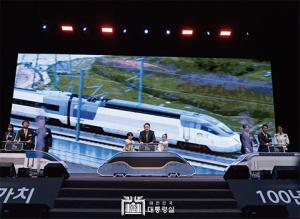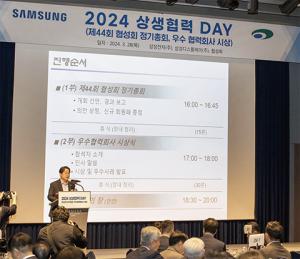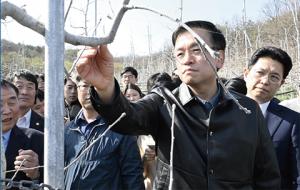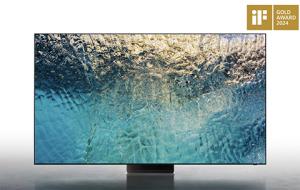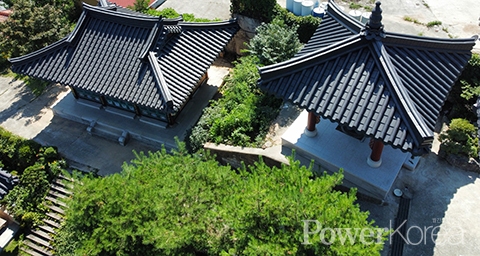 |
||
Recently, the revitalization of traditional hanok houses carried out by local governments and government agencies across the country has begun to attract a great attention. Traditional houses have long been neglected by people because of the perception that they are inconvenient to live in. Good news is that there has been an active movement to restore the beauty of hanok.
The building style that represents hanok is roof tile. From a long time ago, Koreans have used clay tiles for traditional hanok. Roof tile, which has been established as a major style of architecture in Korea, has a long history. From the 2nd century BC to the 1st century BC, houses with tiles began to be built in the northern part of the Korean Peninsula. As time passed, people gradually paid more attention to the landscape and decoration of buildings, and various ancient countries on the Korean Peninsula developed their own style of tiles. As a result, various names have been created depending on the location, purpose, and shape of the roof, and tiles are still loved as a representative traditional architectural style from many people. In modern times, copper and zinc-type tiles, that compensate for the shortcomings of easily damaged clay tiles, are becoming the center of the buzz. <PowerKorea> met CEO Im Jik-su of Gabokiwa, a Korean tiles company.
 |
Copper titles are light, economical, and durable for thousands of years and they are suitable for the humid Korean climate
Gabokiwa is a company specializing in traditional and stylish modern tiles. The flagship tile ‘Gabo Korean Copper Tile’ is a tile made of copper. the most durable metal material. The biggest advantage of copper tile is that it is very durable. A test shows that it took up to 5,000 years for a small hole to be drilled in a thickness of 0.4mm copper tile. Im said, “It takes 757 years to cut 0.1mm of copper tiles. This figure is also the result of an experiment with the worst-case environment and copper tile can be used semi-permanently.” Copper, like gold and silver, has a corrosion rate close to zero. As it is oxidized to metal, it forms a protective film of a dense texture called patina on the surface. Because this protective film blocks corrosion, the lifespan is semi-permanent and there is no need for a separate coating or painting. Thanks to these characteristics, it has elasticity and wind resistance that can absorb deformations caused by thermal expansion and contraction, and there is no abnormality in any weather change. It can be said that there is no significant abnormality in the copper tiles even in the unusual climate that is getting worse in recent years. It is even safer in highly acidic atmospheres such as sulfurous acid or in industrial areas.
Gabokiwa’s copper tiles completely block the infiltration of rainwater. The space under the roof is always kept in an appropriate dry state, and in the case of a country with a long humid season like Korea, copper tiles are more effective with the same period.
Copper tile changes color 18 times in 30 years because corrosion film is formed on the surface. It changes from the same yellowish color to blue in a few months and gradually changes to a darker color, giving off a profound look. The downside is that the bluish water may drip under the eaves during the color change period. You may think this is cool, but on the contrary, some people are reluctant. The product that compensates for this shortcomings of cooper tile is Semi-Zinc.
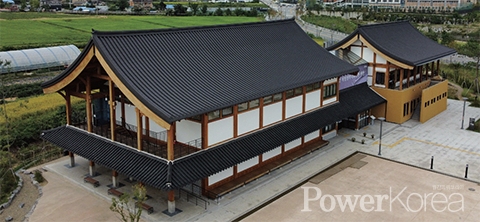 |
Using PRINT TECH color steel plate to reproduce the profound style of Korean-style earthenware: Korean Semi-Zinc tile
In the mid-2000s, copper prices rose significantly. Accordingly, the Korean style Semi-Zinc tile of Gabokiwa, instead of cooper tile, was developed for economy and long life span. Zinc is a material that is fluorine-painted by plating zinc on iron, and Gabokiwa reproduces the profound taste of Korean-style earthenware with Semi-Zinc tile using PRINT TECH color steel plate. The PRINT TECH color steel sheet used in Gabogiwa uses the gravure offset method to directly print the pattern on the steel sheet to produce a sophisticated and clear design. Thanks to this, it is possible to express various colors and to express the unique colors of traditional Korean dishes to the fullest.
Semi-Zinc tiles share many advantages with copper tiles, but in particular, compared to copper tiles, the cost of construction is much lower as the raw material price is lower.
Although it is not at the level that can be used for thousands of years like copper tile, Semi-Zinc tile also boasts a long lifespan of at least 30 years. Unless it is intentionally damaged, it is durable enough that there is no maintenance cost at all. There is no fear of breakage due to freezing, and there is no concern about water leakage during the rainy season because it is possible to construct very solidly.
Semi-Zinc tile has a lower unit weight, so they are lighter than copper tiles, and it is one tenth the level of clay tile, so it is easy to transport and handle. For this reason, the construction cost of semi-zinc tiles is about 60-70% compared to clay tiles, which is very economical.
Through the development of ‘noise-free semi-zinc roof tiles’, the sound and deep emotions of clay tiles are realized
The consumer’s requirement for using Semi-Zinc tiles for many years has been a way to reduce friction noise caused by strong rain during the rainy season. Gabokiwa has been researched for a long time and succeeded in maximizing the friction noise reduction of Semi-Zinc tiles. By adding a special material to the inside of general semi-zinc (SEmi_Zinc) products, friction noise is reduced and the sound of raindrops is similar to traditional tiles. According to the test results conducted by the certified institution, when the general Semi-Zinc product generated 32.8dB of noise due to external friction, the noiseless product generated 18.1dB of noise. If calculated numerically, it means that noiseless products generate about 45% less noise than general semi-zinc, and this technology is also registered as a patent. As a result, Semi-Zinc tile has secured economy and efficiency. Also, it gives a feel of clay tile and consumers can choose the product they want according to their need and want.
Construction in more than 1000 traditional houses and temples for over 20 years. Durable to withstand typhoons and earthquakes
Gabokiwa has a track record of directly producing and installing these various types of tiles in numerous places: Gyeongju Cultural Research Center, Cheonjinam, Haemi Fortress, Namwon Station, etc. In Yongin, the company worked in cooperation with the Myongji University Industry-University Cooperation Foundation for R&D and construction at the Cheoinseong History Education Center. In addition, tile roofs have been installed on more than 1,000 traditional hanoks and temples over the past 20 years, including Yeongsusa Temple in Jecheon, Gangcheonsa Temple, Jingapjong in Seongbuk-gu, Seoul, Woljeongsa Temple in Odaesan Mountain, and Sinheungsa Temple in Seoraksan Mountain. Not long ago, the company also engaged in building Wongwangsa, a temple located in Hungary and exported Semi-Zinc tiles for the interior of a Korean restaurant in the UK.
Gabogi is focused on copper tile and Semi-Zinc tile, but it also has considerable craftsmanship and skill in traditional clay tile.. In accordance with the KS standard (KSF 3510), the company manufactures and constructs traditional Korean-style tiles and Korean-style smoked tiles made by modern manufacturing methods. This tile is manufactured in a way to develop color through the firing process and carbonization process, and bending and distortion are perfectly controlled. Because of this, it is widely used in palaces, temples, and traditional houses. It was applied to the Seoul National Cemetery Heonchung Gate, the Peace Tower in Samyeongdaesa Park in Gimcheon, and the Andong Korea Theme Park construction work.
In addition to this, the company pursues spread of new hanok based on seismic performance, and also sells and constructs dry new hanok tile that maximizes the quality and performance of traditional tile. With this tile, it is possible to reduce the construction cost and reduce the roof load through wet and dry methods. In particular, it is a tile that is strong against natural disasters such as earthquakes and typhoons by applying interlocking seismic design.
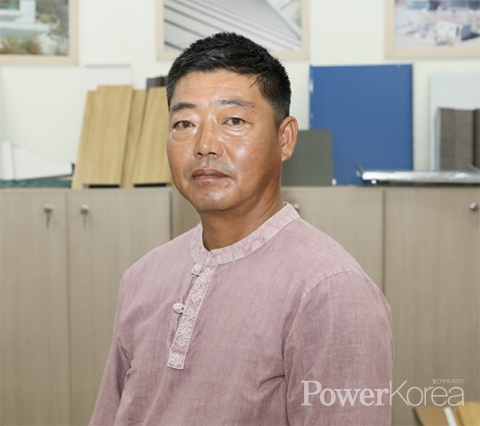 |
| ▲ Gabokiwa / CEO Im Jik-su |
Construction in more than 1000 traditional houses and temples for over 20 years. No maintenance has been received.
Gabokiwa is an expert in all types of tile and even roof construction. Along with traditional earthenware, the company is doing all the construction related to roof finishing, and understands not only tiles, but also various finishing materials and construction methods. Thanks to this the company has never been required for maintenance for the last 20 years.
A while ago, a huge typhoon ‘Hinnamno’ passed through the southern region with great damage. In Korea, large and small typhoons pass from August to October every year, causing many damages to man and properties. Depending on the strength of the typhoon, it also causes large and small damage to the exterior finishing materials of buildings. When it comes to safety, durability and seismic resistance are the most important factors. When an earthquake occurred in Gyeongju and Pohang a few years ago, there were many traditional hanoks due to local characteristics. Naturally, there were many accidents when clay tiles fell down. Again, this was an opportunity to remind us of the importance of durability and seismic performance.
Recently, abnormal climates are occurring more frequently around the world, and Korea is no longer a safe country against earthquakes. Reinforcement of light weight, durability and seismic performance for long lifespan of buildings is considered essential. The more that happens, the stronger the position of Gabokiwa’s copper tiles and Semi-Zinc tiles.
Regarding future plans, CEO Im said, “Recently, as Buddhism and Korean traditional houses are spreading widely to the world due to the influence of Hallyu, I plan to actively pioneer overseas markets.”
신태섭 기자 tss79@naver.com

